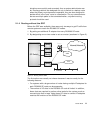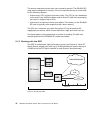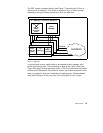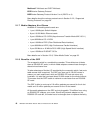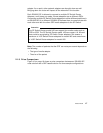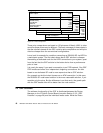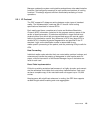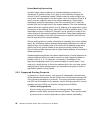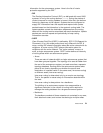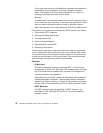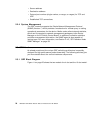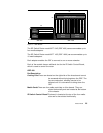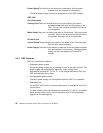Router Node 19
Manager updates the system routing tables and performs other administrative
functions, the intelligent processors on each media card perform all routing
functions. This design supports efficient distributed processing of router
operations.
2.2.1 IP Protocol
The GRF supports IP datagram routing between major types of standard
media. The implementation conforms with IP Version 4 and routing
specifications described in Internet RFCs.
Each media card has a complete set of route and
Address Resolution
Protocol
(ARP) information contained in the program memory space of the
card’s on-board processor. IP packets are buffered in large transmit and
receive buffers from which they are transmitted across the central switch
fabric to the destination media. Any difference in MTU size (large MTU to
smaller MTU) is handled by packet fragmentation as specified in the IP
standard. Logic on the destination media is responsible for any
media-specific processing of the packet, such as producing 53-byte cells for
ATM.
Data Forwarding
Individual media cards maintain their own route tables, perform lookups, and
autonomously handle the passing of datagrams to other media cards for
export, without intervention of the Router Manager. Layer-3 decisions are
local to each card.
Route Table Implementation
Critical to providing sustained performance in a highly dynamic environment
are the cacheless route table and route lookup implementation. Each card
carries a complete copy of the route table and can support up to 150,000
entries.
Keeping pace with significant advances in routing, the GRF also supports
variable-length subnet masking and route aggregation.



